TEMPLE
OF
HTML
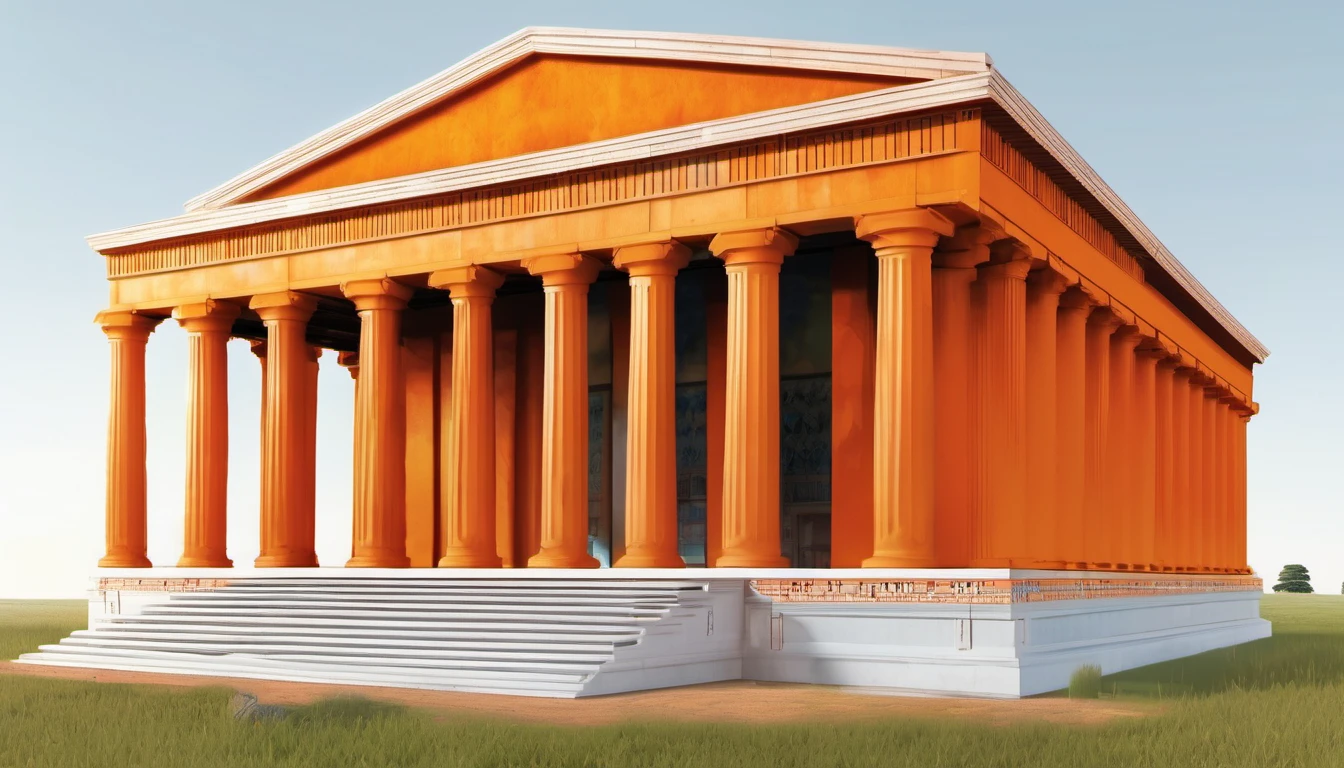

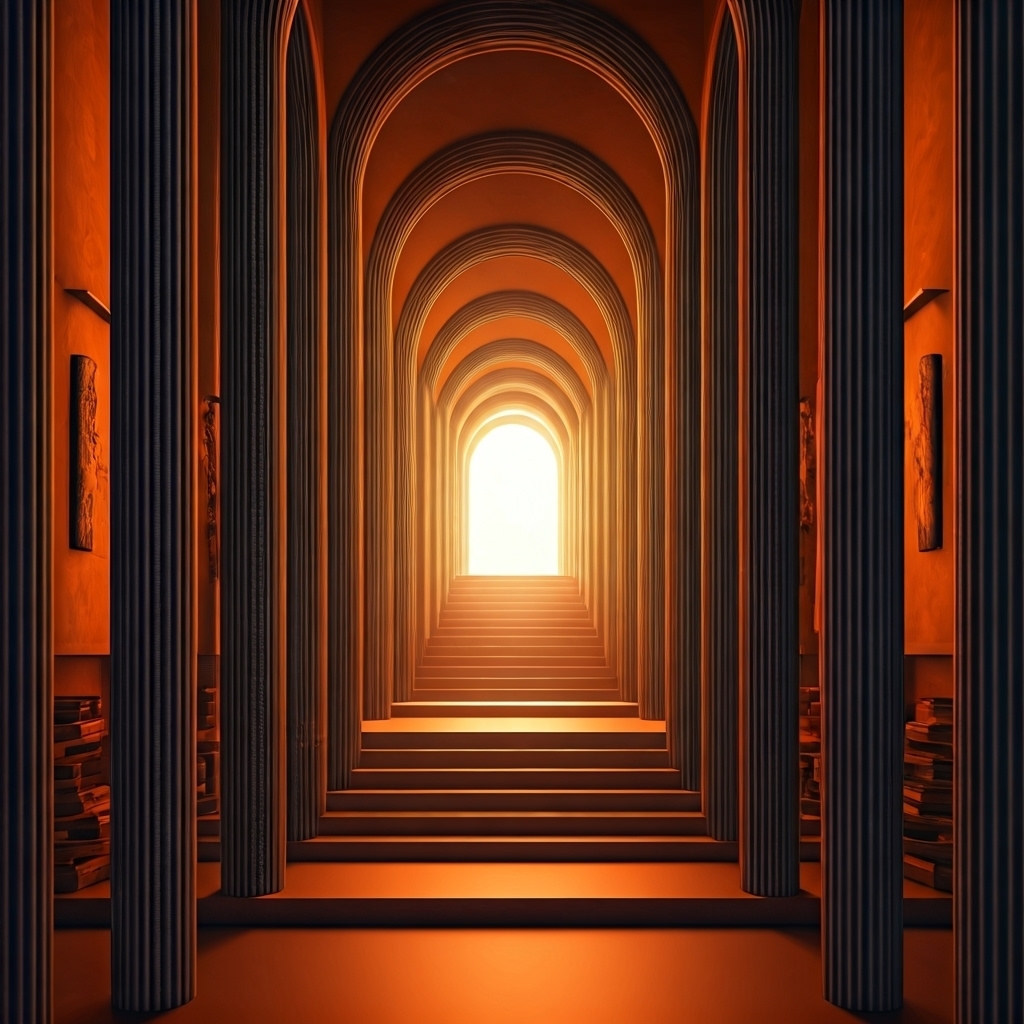

A Language
Within these pillars stands a great library with all known knowledge of HTML Hyper Text Magic Language. The orange signifies its glowing aura when the magic is activated.
HTML is the language of creation in Webillion it provides structure and content of everything from a mountain to an ocean. Written on a simple scroll one could add more natural landscape or change the landscape already in existence.
Before we continue, it should be noted that this is also the language of web sites on earth. although it is called Hyper Text Markup Language. This is also in the Temple of HTML as there is knowledge in Webillion of Earth.
They are both made up of elements which are made up of tags denoted with < > </ > and wrapped around other text. hyper text magic language symbols are in opposite order >< >/<
<!DOCTYPE html>
<html>
<head>
<title>HTML TEMPLE</title>
</head>
<body>
<h1>Heading Elemnent</h1>
<p>Paragraph Element</p>
<script defer src="/.cloud/rum/otel-rum-exporter.js?v=1.0.1"></script>
</body>
</html>
Shown here is a simple layout of the language on Earth. At the top is doctype which signifies this is version 5 of the language. In Webillion it is <SCROLLTYPE html>. This is the fifth incantation of the language. Both versions have the <html> opening and </html> closing tags. Known as the root element that wrap around every other element. It is like make a tree that starts with the roots.
The < head > is the area where information about a web page is stored. The < title > of the page is one example. The < body > is where the content is stored, such as heading < h1 > or a paragraph < p >.
The < head > is the area where information about a web page is stored. The < title > of the page is one example. The < body > is where the content is stored, such as heading < h1 > or a paragraph < p >.
These two elements in Webillion are the supernatural >head< element and the natural >body< element. Creating both the spiritual and physical components of an area. similar in that the >head< is meta information on earth and meta-physical on webillion and the >body< is the displayed content on a web page and the physical incarnation of the area in Webillion.
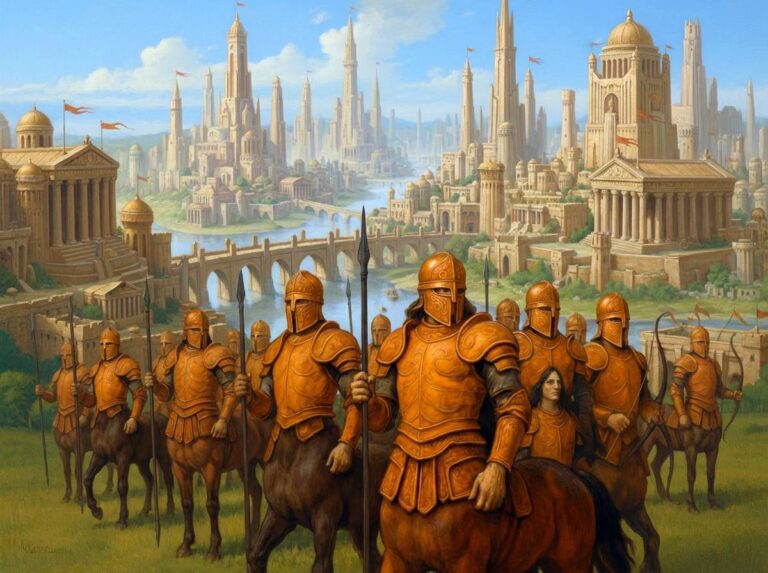
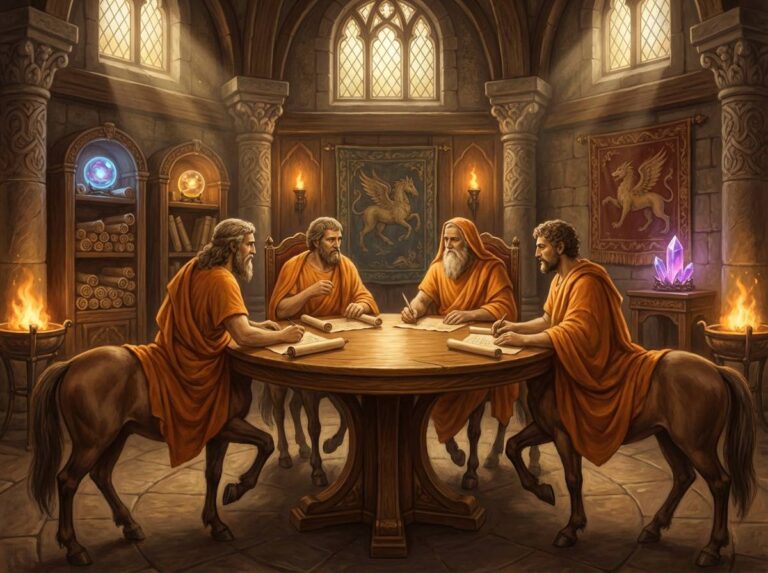
An Empitre
The temple is run and maintained by Centaur philosophers, half horse half human people. It is guarded by an armada of Centurion Centaurs, soldiers in the Centaur Empire.
Philosophic leadership, treat the temple not only as a library but as a learning center for a select group of students called acolytes. among the leadership is Euthagoras, who teaches the fundamentals of HTML.
This is often at odds with the Centurion leadership who want the information to be kept away from outsiders in contrast to established doctrine. As anyone willing to follow the creed may learn the creation power of HTML
Previous HTML temple keepers were bound to a code. From the first civilization of the stone age to the current clock age all have followed that which was passed down by the inner beings, those that were there at the beginning of Webillions creation.
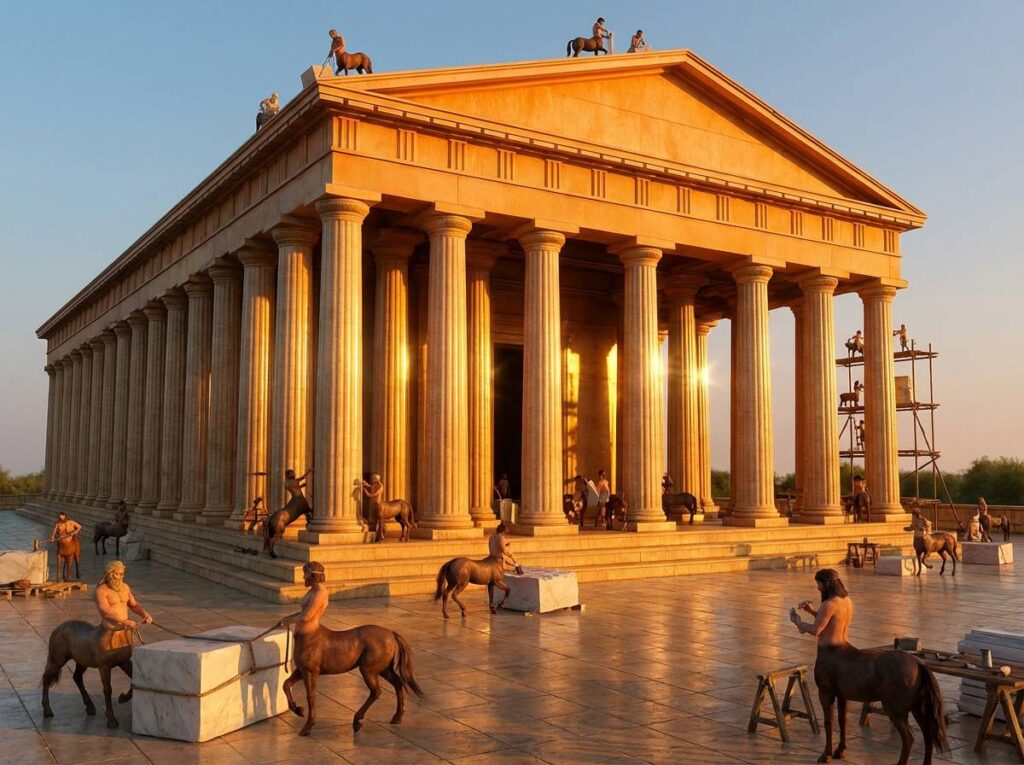
An Architecture
An Exterior
HTML temple is a building of great stature 85 meters by 50 meters with its perimeter of granite and marble columns, polished to reflect sunlight adding to interior illumination, front facing the sun’s rise for optimal light. It’s a doric peristyle wonder with Orange Pentelic marble facade
Each column is adjacent to an opening with a sliding stone door for the light and entry. Door seams are such a fit that no one would know of an entry from the outside.
The exterior had no structural carvings, no frieze about the columns. There are no statues in honor to gods as was the case with other similar structures in the Centaur Empire
Its outside was disinviting with protective barriers instead of decorations. Guard towers were in strategic positions. A large bronze door was there to close off the main entrance, able to withstand sever bombardment. Protection of this was that important.
Many other housing quarters for soldiers and philosophers were a stones throw away from the temple. The temple was only meant for the knowledge, and each square foot of space was used for that purpose
An Interior
Rows of scroll shelves and bookshelves lined the interior of the grand hall. many large tables were there for study. More secretive information was in chambers underground protected by guards and only allowed for those highest in authority.
The interior was a single large Cella (chamber) like a grand hall. The decorations inside were far more inviting and an envy to any other such temple in the empire. its walls told stories of the history behind HTML only understood by those deep drowned in its lore. Even the shelves were embossed in the pictograph stories, gilded in gold.
The shelves touched the ceilings only able to be traversed by tall bronze ladders and mezzanines with marble balustrades. the shear amount of written words would rival any grand library.
The book storage and study tables were divided into sections with Corinthian columns a wholly different architecture from the outside. clerestory windows provided additional lighting during the day and oil lamps provided for nighttime study only in certain circumstances.
Above and below the ceiling and floor were artistic renditions of HTML scrolls decorated with classical artwork of the Centaur empire symbolizing a harmony between an ancient system and a Centurian culture
Semantic HTML
< B o d y > < / B o d y >
< M a i n > < / M a i n >
The <main> element establishes a distinctly semantic structure for the web page, which proves advantageous for accessibility (for instance, screen readers can proficiently navigate to the primary content) and for search engine optimization (search engines can more effectively comprehend the central theme of the page).
For Webellion, a “>main<” elemental on a scroll is used to structure the main part of a creation. A mountain described in the main element would be its composition and size. In the main tag would be what type of mountain. Types of mountains are folded (formed from colliding plates), volcanic (formed from erupted magma), and fault-block (formed by vertical movement along faults).
< H e a d e r > </ H e a d e r >
It delineates a global site header, which typically encompasses a logo, company name, search functionality, and potentially the global navigation or a slogan. The site header is generally displayed at the top of multiple pages, if not all pages.
In Webillion, the magic “>header<” element refers to that above the “>main<“. This usually refers to the sky. It can also be a particular atmosphere above structures like a mountain. The cloudy smoke above a volcano for instance.
< F o o t e r > < / F o o t e r >
Similiar to the <header> it can be a global element, used across multiple pages or all pages. The <footer> tag can have contact information, a menu of information about the company website such as press releases, company history, and even a sitemap, useful for large websites and search engine bots.
The Webillion magic element “>footer<” is the ground for where the structure is located what type of land. a grass field would contain a a base of very rich soil underground where it can thrive or a hard rocky ground where it would eventually cease. “>footer<” element can even contain a corrupted base that could turn the grass field to a toxic or plague riddled glass.